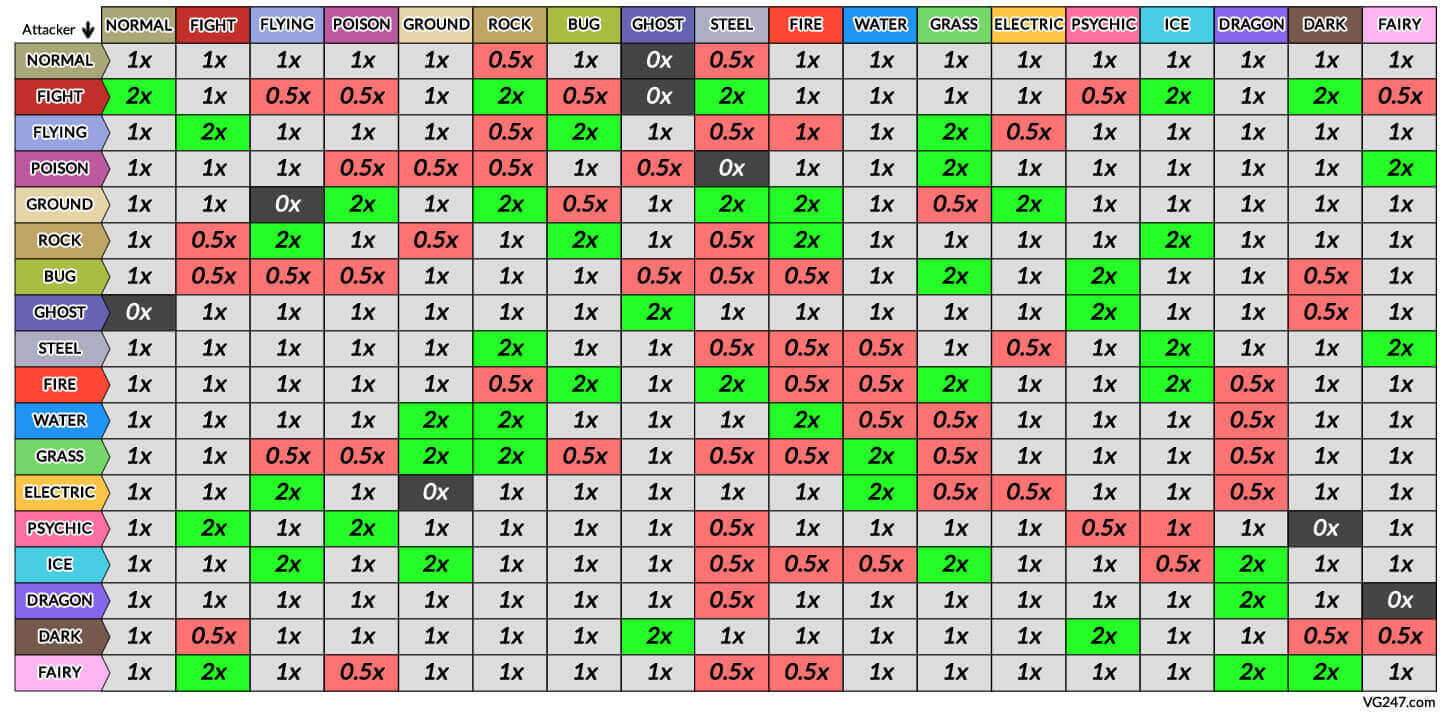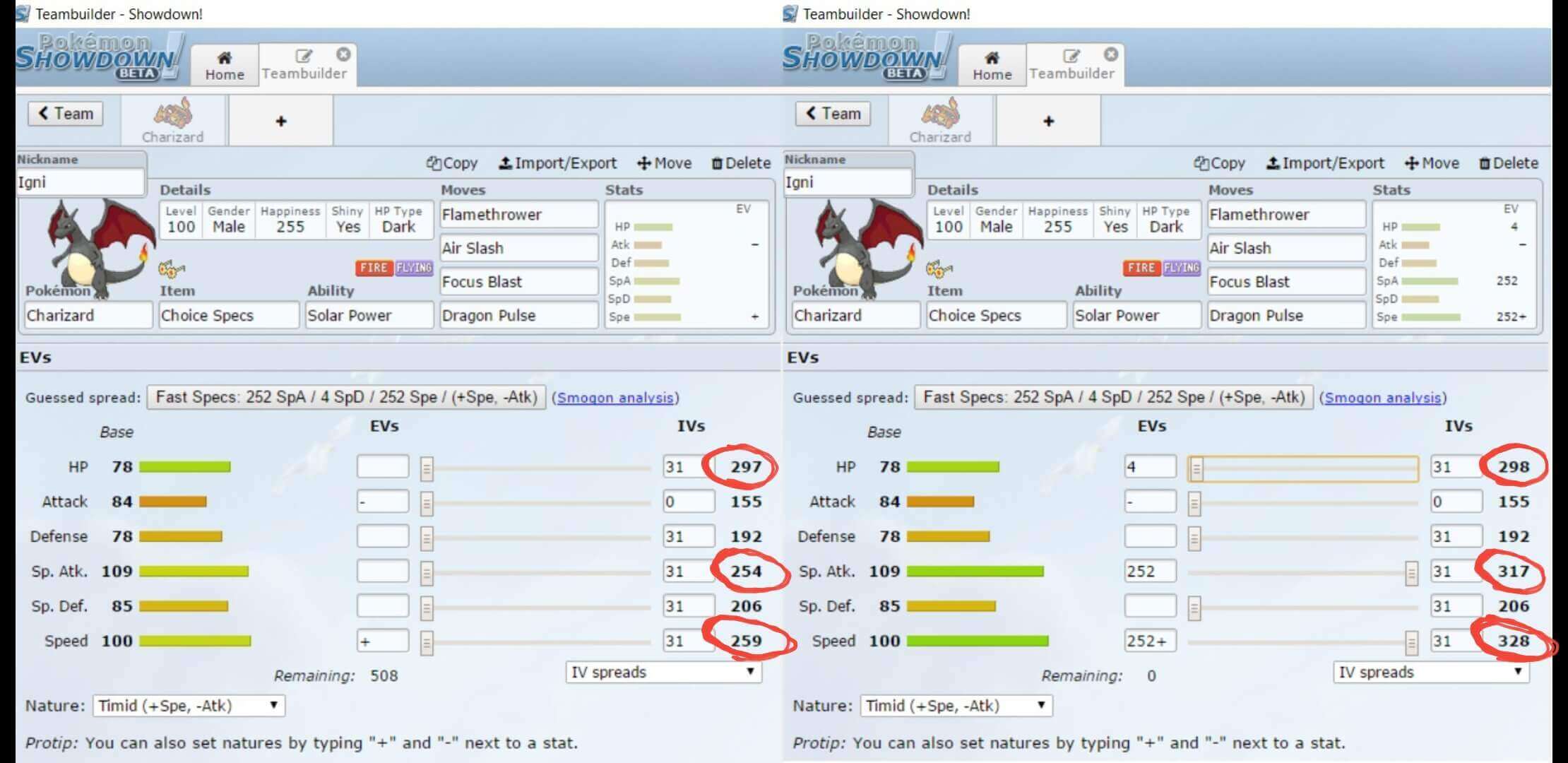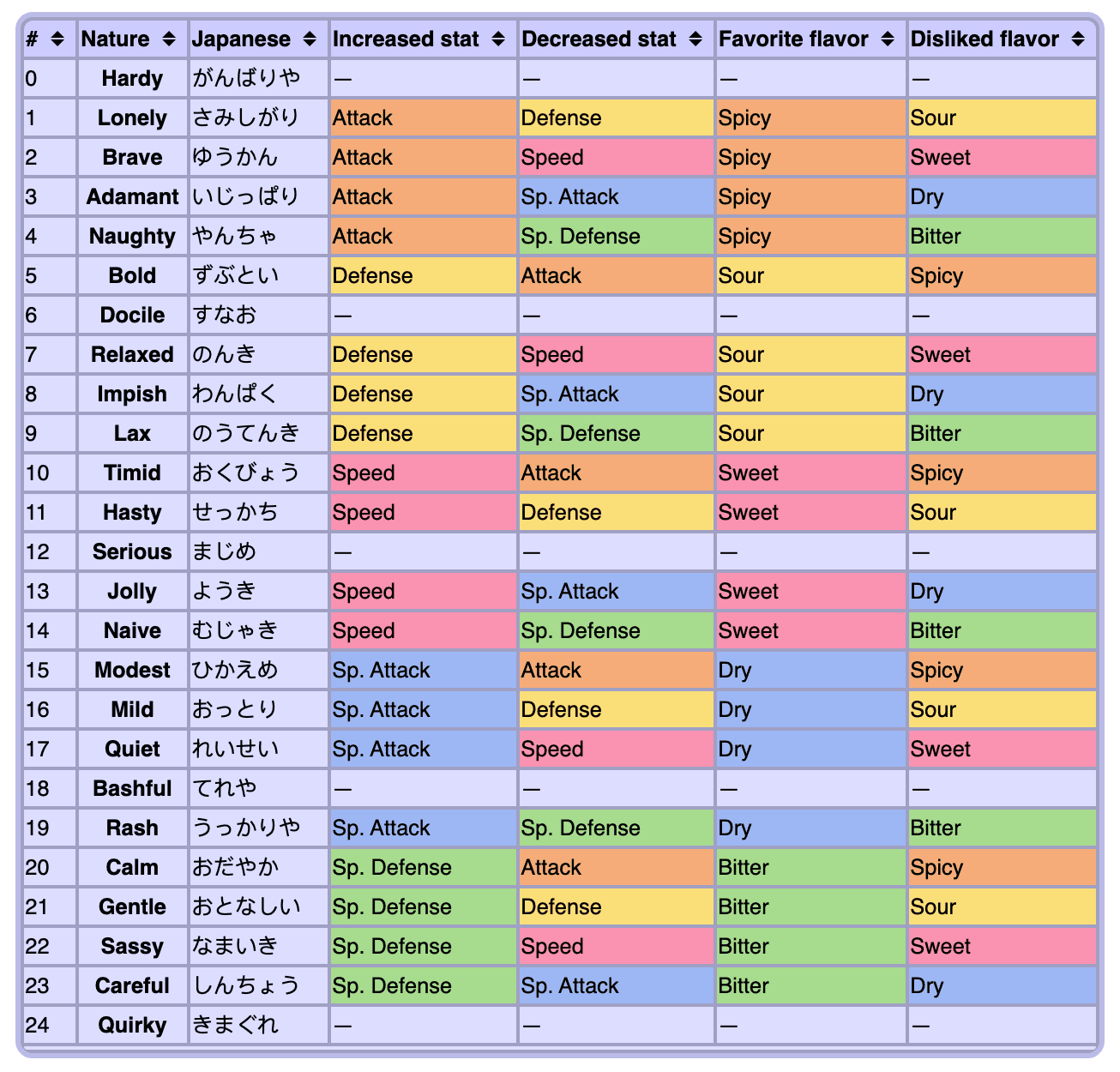Competitive Pokémon Primer
Most gamers are aware that Pokémon is the largest-grossing multimedia franchise out there. Across the trading card game, video games, anime, and numerous toys, Pokémon is a real powerhouse. What many may not be aware of, however, is its budding competitive facet. To be clear, there has been a “competitive scene” for Pokémon since the very first generation of games, but it has increased geometrically with each new generation of games that are released. Even still, the existence of the Pokémon competitive circuit is still nowhere near its potential. Trainers of all ages have been trading and battling with their siblings, friends, classmates, and so forth from the series’ outset, but there is a night and day difference between goofing around with your mates and playing at a competitive level (big Magikarp, little pond). My goal here is to introduce you to concepts that every competitive Pokémon player has spent countless hours familiarizing themselves with. I hope that this Pokémon primer will lend a Helping Hand in your journey to be a more advanced player. Bear in mind that, while I will do my utmost to ensure your understanding of the coming concepts, some things can only come from doing, and you’ll have to put in the work to put the information I’ll supply you with into practice.
What is “competitive Pokémon?” 2016 VGC World Champion Wolfe Glick describes Pokémon as akin to “…a combination of chess and poker.” That’s a pretty spot-on assessment, as Pokémon is a turn-based strategy game consisting of a lot of information management with regards to determining what move set a given Pokémon is running, its held item, likely nature, ability, and so forth, and also probability management, with regards to secondary effects of moves and the likelihood of them activating, missing, etc. By way of this notion alone, players new to the idea of a competitive Pokémon scene might think that it sounds a lot more complicated than most people give it credit for, and they would be right. There are also two main competitive scenes for Pokémon, the Smogon online battling community, which tends to have a greater focus on 6v6 Single Battles, and the official Video Game Championship circuit hosted each year by The Pokémon Company International, which runs a bring-6-pick-4, Double Battle format. The information in this guide will be helpful for both of these. For simplicity’s sake, I’m going to break this guide up into several segments so that those who perhaps are already familiar with certain aspects of the game can skip ahead. However, for those desiring a bit of a refresher, remedial course, or are new to this information all together, I’ve cumulatively ordered the following topics so that each subject will sort of snowball into the next. The idea here is maximum immersion and efficiency, where topical understanding is concerned.
– Pokémon Types
– Pokémon Stats
– Speed Games
– Priority
– Natures
– Abilities
– Individual Values (IV’s)
– Effort Values (EV’s)
Pokémon Types
If you’ve played any Pokémon game long enough to receive your first starter, then you know that every Pokémon has at least one type that it falls under, and many have two. For example, my very first starter, Charmander, was a Fire-Type; his final evolution, Charizard, is both a Fire-Type and a Flying-Type (don’t get me started on why he isn’t part Dragon-Type…). All Pokémon types have a positive or negative match-up in relation to another type. This is important both offensively and defensively, as most moves also have a related type. If I switch my Charizard in on a Fire-Type attack, it will be considered “Not very effective,” and that move will hit with ½ its standard power. On the other hand, if Charizard were to take a hit from either a Water-Type or Electric-Type attack, it would be considered “super effective,” and I would take double the damage instead. Remember that every type has a weakness and that many Pokémon possess dual typing? Well, if Charizard, Fire/Flying were to be hit by a Rock-Type move, which is super effective against both his typings, I would take quadruple the damage. There are also type immunities such as Ground-Type Pokémon being immune to Electric-Type attacks, Flying-Types being immune to Ground-Type attacks, etc. Some abilities also grant immunities to certain types, but more on that later. For now, just remember that, as a general rule, every Pokémon has a strength and a weakness. You may also use the chart below for reference. In addition to Pokémon themselves having types, the moves they have do as well, and there are benefits to using moves of the same type as that Pokémon. If my Charizard attacks using Flamethrower, normally a base 90 power move, it will receive what is known as a “Same Type Advantage Boost” (or STAB) to its power. This STAB bonus amounts to an x1.5 (or 50%) boost, which makes the move now have a power of 135!
 Pokémon Stats
Pokémon Stats
Every Pokémon has six different stats: Hit Points (HP), Physical Attack (Atk), Physical Defense (Def). Special Attack (SpAtk), Special Defense (SpDef), and Speed (Spe). Let’s quickly run through the importance of each stat:
Hit Points, or HP, is the energy that a Pokémon has in battle, and once it is reduced to 0, that Pokémon faints and is no longer able to continue that battle. There are certain moves, such as Recover, Roost, Slack Off, Rest, etc. that are dedicated healing moves. There are also other moves whose secondary effects restore HP, such as Leech Life, Giga Drain, Dream Eater, Drain Punch, and others. In addition to these moves, various held items restore HP. Some of the most widely-used restorative items are Leftovers, Sitrus Berry, Black Sludge (leftovers that only works for Poison-Type Pokémon), etc.
We’ll do a deeper dive into damage calculation at another point, but the base level you need to know is that there are four stats used in damage calculation: Attack, Special Attack, Defense, and Special Defense. If a Pokémon uses a physical attack, such as Charizard’s Fire Fang, then the damage is calculated using his Atk stat against the defending Pokémon’s Def stat. In the same way, if Charizard were to use a special attack like Flamethrower, then the damage would be calculated using his SpAtk stat against the defending Pokémon’s SpDef stat. There are very few exceptions to this, and they are all move-specific, such as Psyshock and Psystrike using the attacking Pokémon’s SpAtk but the defending Pokémon’s Def, or Body Press using the attacking Pokémon’s Def stat for its power. But generally, the above rule applies.
Speed games – Breaking Down the Speed Stat
Speed is a vital stat to know at all times; it naturally determines which Pokémon moves first in battle. If a given Pokémon can move before another and KO it before it can even get an attack off, then that Pokémon’s team is put into a position of significant advantage. In Pokémon battles, it doesn’t matter whether a Pokémon is 1 Spe point faster than an opponent or 100 points faster – it will *always* (under normal circumstances) move first. When does this not apply? This is barring the presence of Priority Moves (Quick Attack) or speed control altering moves (Trick Room). Furthermore, there are specific abilities that, under the right weather conditions, will increase a Pokémon’s operating speed in battle while those conditions are active. More on those later.
Getting Your Priorities Right
Related to speed, all moves, in addition to having a type (Fire, Dragon, Fairy, etc.) and category (Physical Attack, Special Attack, Status, and so forth), also have a priority tier. Most moves will have a priority of +0. This means that out of two Pokémon both using moves with +0 priority, the Pokémon with the higher Speed stat will move first. Priority moves, however, circumvent this. A slower Pokémon using a move with +1 priority (Conkeldurr’s Mach Punch) will move before a faster Pokémon using a move with a priority of +0 (Lucario’s Aura Sphere). Other examples of priority moves are Fake Out, which has a priority of +3, Extremespeed at +2, and Helping Hand with +5. Some moves have negative priority, such as Dragon Tail, which is -6, Roar -5, and Trick Room, which sits at a -7. Also, the ability Prankster adds a +1 priority to any status (non-direct-damage) move. So Whimsicott or Grimmsnarl using Tailwind or Thunder Wave respectively will go before any Pokémon using an attack with +0 priority. Lastly, if two Pokémon possess the same speed stat and also use a move with the same priority tier, then we have a “speed tie,” and the game calculates a 50/50 probability to determine which goes first.
Additionally, each unique Pokémon species has a set number for each of these stats that determines what their unmodified minimum/maximums are; we would call these their “Base Stats,” and every single Pokémon of that same species will have these same Base Stats – there’s no way around it. What do we mean when we say “unmodified?” This assumes a neutral nature, a maximum IV for the given stat, and no EV investment in it (don’t worry, we’re going to come back to all of these momentarily). Now, if you’ve ever caught two Pokémon of the same species and level, you may have noticed that their stats were not the same. Why is this? This would be due to their “Actual Stats” being different. Let’s talk about some of the factors that cause this variance, with the first, and most basic, being a Pokémon’s Nature.
Pokémon Natures
Introduced in the third generation of the games, every Pokémon has a given Nature which is set via in-game randomizer (or RNG) when it is encountered in the wild or hatched from an egg. Nature is essential because most of them alter the min-max of specific stats on a given Pokémon. Having the proper Nature is crucial if you wish to have the most useful Pokémon of a given species as most excel in at least one or two stats over another; typically, you will want to capitalize on that. For example, let’s say that I have a Charizard, a Pokémon who generally is best as a special attacker. By this logic, I would want a Nature that increases my maximum Special Attack, while reducing a stat that I do not need (in this case, his Physical Attack stat). Following this train of thought, I would want a Modest Nature, which is +SpAtk/-Atk. We can take that a step further, as Charizard is usually a Pokémon who is most effective when you also capitalize on his respectable base 100 Speed Stat. So now we can say that what we really want is a Timid Nature (+Spe/-Atk). We can follow this for every Pokémon we raise so as to capitalize on the stats it needs to be the most effective in the role we wish for it to fill. Except for a few “neutral natures” that neither positively nor negatively affect stat growth, each nature applies an x1.1 modifier to one stat and an x0.9 modifier to another. Timid, for example, boosts Speed Stat growth by 1.1 while reducing Physical Attack by 0.9. Refer to the following chart for the effects on stats that each nature has. The two columns furthest to the right represent the types of berries that Pokémon of a given nature prefers or detests, which affects how their happiness level fluctuates in relation to the berries you feed them.
Pokémon Abilities
Also introduced in Gen III, abilities play an integral role in competitive Pokémon play. Abilities have a vast range of effects; they can boost stats under certain conditions (i.e., Swift Swim and Sand Rush increase the Pokémon’s speed, while rain or sandstorm is active), cause status conditions (i.e., Poison Touch or Static having a chance to Poison or Paralyze the other Pokémon respectively), or even alter the conditions on the battlefield entirely (i.e., Drizzle activates rain, Grassy Surge places Grassy Terrain, Sandstream whips up sandstorm weather, etc.). Having the right ability for your Pokémon is another essential facet to having a more complete and effective team. All Pokémon have 1-3 abilities, with the third (if it has one) usually being what is known as a “Hidden Ability.” Hidden Abilities are typically much more challenging to acquire Pokémon with, and are, in many cases, quite compelling to have. To use Charizard as my example again (yes, he’s my favorite Pokémon, if you couldn’t already tell), his standard ability, Blaze, can be moderately useful in some circumstances. However, his Hidden Ability, Solar Power, can be measurably more helpful for a Pokémon that’s usually used as a special attacker as it boosts the SpAtk stat under sunny weather conditions at the cost of a fraction of HP each turn. This ability would not, however, be optimal if I wanted to run a physical Charizard set, as I would receive no benefit from it. Knowing which ability is most appropriate for what you need in your team is just another facet of making yourself a more efficient trainer.
IVs – The Law of Individuality
Now that we’ve gone over a lot of the remedial stuff that alters a given Pokémon’s stats, let’s get into the higher level, starting with Individual Values. Individual Values, or “IVs,” as they are more commonly referred to, are a set number in relation to each of a Pokémon’s six stats. They affect the final figure for a given stat and range from 0 to 31. To oversimplify, as you may have guessed, at Lvl 100, a stat’s IVs increase that stat’s final value by that number (0 to 31). Most of the time, you, at a minimum, want your used stats to be 31. “Used stats” are those that we actually care about for a given Pokémon build. Using my same Charizard once again, we (using the template of HP/Atk/Def/SpAtk/SpDef/Spe) would want his IV spread to be 31/X/31/31/31/31. This means that all of our stats, sans physical attack (which can technically be anything as we aren’t using it), are going to be at their highest values, barring the aforementioned nature modifiers and EV investment (more on that in a moment). Let’s quickly jump back to something I glossed over regarding that ‘X’ IV stat. There are times when, for the sake of maximum optimization, you would want the Atk IV on a non-physical attacker, or non-attacking Pokémon in general, to be a value of 0. The reasons are very inside baseball, so stay with me, but it essentially boils down to that Pokémon taking less damage from moves or conditions that are calculated based on its own physical attack stat, such as hurting itself in confusion or being hit with the move Foul Play, which calculates its power using the defending Pokémon’s Atk. This is by no means necessary and can be a very arduous process if you’re not already prepped for it, but it certainly doesn’t hurt you (or rather it hurts you less). Moving on…
Up until recently, IVs were one of a few hidden values that could not be viewed in-game without the use of a cheat device and had to be calculated either with some rigorous math or through the use of various IV Calculators online. However, this is no longer the case, and we now have access (sort of) to these values. Upon completion of the Pokémon Sword and Shield main game, trainers will get access to the Battle Tower. Once you’ve won six matches and beaten Leon in the tower, you unlock the Judge PC function. This function allows you, after a fashion, to “view” a Pokémon’s IVs. The caveat is that you don’t view the actual numerical values, but the PC Judge assigns each IV a rating from “No Good” (0) to “Best” (31). Using the Judge feature, trainers can now get an accurate gauge of their Pokémon’s competitive viability and whether or not they’re worth their time training. Additionally, once you’re champion of the Galar Region, you can access Hyper Training, which allows you to exchange Bottle Caps or Gold Bottle Caps (earned through winning streaks in the Battle Tower or as rewards in Max Raid Battles) to increase the IVs of a Lvl 100 Pokémon artificially. Note that these Hyper Training-increased IVs are artificial, and only cause the value to simulate the 31 maximum, and they cannot be passed down through breeding (let’s put a pin in that for a moment) as a natural IV value would be.

So, at this point, you may be thinking, “Wow, all of that information on IV’s is fantastic, but how do I actually get the best IV’s possible for my Pokémon?” As I briefly touched on, you can artificially “increase” a Lvl 100 Pokémon’s IV’s through Hyper Training. This, however, is predicated on you first getting said Pokémon all the way up to Lvl 100. And while it’s certainly not nearly as grueling a task as it used to be (especially with the Rare Candies and various Exp Candies you can earn through grinding the Battle Tower and Max Raids), that’s still a relatively significant amount of work just for an artificial fix. What, then, is the better solution? One method is by searching the wild for “Brilliant Aura Pokémon.” Every so often, while you’re scouring the Wild Area, you’ll spot a Pokémon with a bright, golden aura shining around it. These wild Pokémon will have max IVs for two or three of their stats. The more times you battle the same species of Pokémon, the higher the probability of a Brilliant Aura one spawning. This method of “chaining” also has the secondary (albeit only aesthetic) benefit of increasing the likelihood of finding a Shiny Pokémon of that species as well. Another, and arguably superior, method for finding Pokémon with the best IVs is through Max Raid Battles. High-level Max Raid Battles (4 or 5 stars) will guarantee you run into a Pokémon with four or more max IVs in turn. Along with the other benefits of completing these PvE events, such as rare berries, Technical Record moves, and various experience candies, this is an excellent way to get the best IV’s if it’s a Pokémon you are wanting.
But what if you can’t find a Max Raid Battle for a specific Pokémon and also don’t feel like chaining the same species ad nauseam? Remember that pin I told you to stick in that breeding topic? Let’s pull it. Series veterans know that, once you get into a rhythm, there’s nothing as efficient as breeding for what you need in a species, be it nature, IVs, or otherwise. Breeding also has the crucial benefit of allowing you to pass along moves from the parents, which the child would ordinarily not learn. These are appropriately known as “Egg Moves.” A quick aside is that Brilliant Aura Pokémon may sometimes already know Egg Moves. We’ll tackle breeding as its own topic in-depth at another time, but through the use of the hold item Destiny Knot (which can be purchased in Hammerlocke), the parent Pokémon can pass along up to five of their IVs to the offspring with the sixth being randomly generated. Now let’s get on to EVs…
EVs – Putting Forth the Effort
There are two numbers you’ll want to familiarize yourself with from jump street: 508 and 252. The first, 508, is the total number of Effort Values (EVs) that any given Pokémon can invest across its six stats. The second, 252, is the maximum number of EVs that can be invested into any one stat. Why are these numbers significant? At Lvl 100, for every 4 EVs invested into a stat, the actual stat increases by 1. This means that at Lvl 100, with a neutral nature and 252 EVs invested, a given stat will be 63 points higher than it would with 0 investment (a beneficial nature increases this by 69 instead). This is crucial for maxing out the used stats. A very pedestrian EV spread for an offensive Pokémon would be 252 EVs invested in whichever attack stat it is using, 252 EVs in its Speed stat, and the final 4 in either hit points or one of its defenses. Let’s use my buddy, Charizard, again as an example. I would have my Timid Charizard with 31/X/31/31/31/31 for its IVs be invested with the following EVs: 252 SpAtk/252 Spe/4 HP. This isn’t always the most efficient or optimal EV spread (especially in Double Battles), but it is widely used, and for the sake of simplicity, we’re just going to go with it.

Now, how does one go about getting these Effort Values? There are multiple methods of EV training your Pokémon, and truthfully, it comes down to personal preference and the tools you have available to you at the time. One way is through the use of vitamins available at the Poké Mart. There are six different vitamin items, one for each stat a Pokémon has. They are HP Up for Hit Points, Protein for Attack, Iron for Defense, Calcium for Special Attack, Zinc for Special Defense, and Carbos for Speed. Each of these bestows 10 EV points in the related stat. In prior generations of the games, these locked out after 100 EVs were invested in a given stat, so if my Charizard already had 90 EVs in Speed, I would only be able to use one Carbos on him for the last 10 EVs. In Pokémon Sword and Shield, this barrier has been removed, and you may now use as many vitamins as you want all the way up to the 252 EV max on a single stat. This is a potentially speedy method; however, as these vitamin items cost a whopping 10,000 PokéDollars each, it is also a costly method. There is an excellent way of farming money in Sword and Shield, and you can check out Austin John’s video on that here.
Every Pokémon you encounter has a designated number of Effort Points that it grants when you battle against it. For example, Magikarp gives 1 Speed EV when you KO it. Now, obviously, (assuming the previous example EV spread) battling 252 Magikarp ad nauseam sounds just a bit arduous, but fear not! This is far easier with the right tools – let’s take a look at them. The Power Bracer, Belt, Lens, Band, Anklet, and Weight are items that can be purchased in Hammerlocke and increase the number of EVs a Pokémon earns in a specific stat by 5. If we want to Speed EV train, that means we’d want our main Pokémon to be holding a Power Anklet. Now knocking out Magikarp results in a gain of 6 instead of 1. To make this even faster, if you’re lucky enough, you can catch a Pokémon with the Pokérus virus and get it to spread amongst your Pokémon. Pokérus DOUBLES the EV gains of any Pokémon that has contracted it. Now our Speed EVs from Magikarp are 12 instead of just one or even 6! Something important to keep in mind is that, with the lack of being able to turn off the Exp Share function in these new games, all party Pokémon will receive EV points (though not boosted by the Pokérus or Power item unless they are also in possession of them). This would make EV training a bit of a hassle unless, of course, every single Pokémon in your party is something you want to train in the same stat. There is a way around this, and that is by putting all of your Pokémon except the one you want to train into the PC, but that seems like a bit of unnecessary Jenga, which leads me to another alternative – the Poké Jobs function, accessible from any Pokémon Center PC. Through the process of sending your Pokémon out on various tasks for anywhere from a single hour to upwards of 24 hours, Poké Jobs allows you to passively EV train your Pokémon in a given stat. The EV gains amount to 4 EVs per hour on the job, so if you send a Pokémon out for the max 24-hour period of time, it will earn 96 EVs in the stat associated with the selected job. However, the Pokérus, as mentioned above and Power items stack with this, meaning that collectively you can max out a single stat throughout a 24-hour job! Furthermore, you can use this feature to send up to ten Pokémon out and max out their EVs while you go about your business with other things.
What if, through accident or just your normal playthrough of your game, some of your Pokémon accumulated EVs in stats that you don’t want them in? There are several berries in the Galar Region that allow you to reduce a Pokémon’s EVs in a specific stat: Pomeg lowers HP, Kelpsy lowers Atk, Qualot lowers Def, Hondew lowers SpAtk, Grepa lowers SpDef, and Tamato Berry lowers Spe EVs. These Effort Value-lowering berries have the added benefit of increasing your Pokémon’s happiness, which is another hidden value that is used as some Pokémon’s evolutionary criteria, or as increasing the base power of moves such as Return.
That was quite the info dump, but the goal was to impart a reasonable amount of my knowledge to you. There are still other topics to cover, such as Status Conditions, controlling the various Field Conditions (this includes weather), Breeding, item choice, Team Building, and more, but those will be for another day. Are you new to competitive Pokémon battling? If so, did you find this guide helpful? What topics would you like to see covered in the future? Let us know in the comments below and stay tuned to Geeks + Gamers for more Pokémon content!








